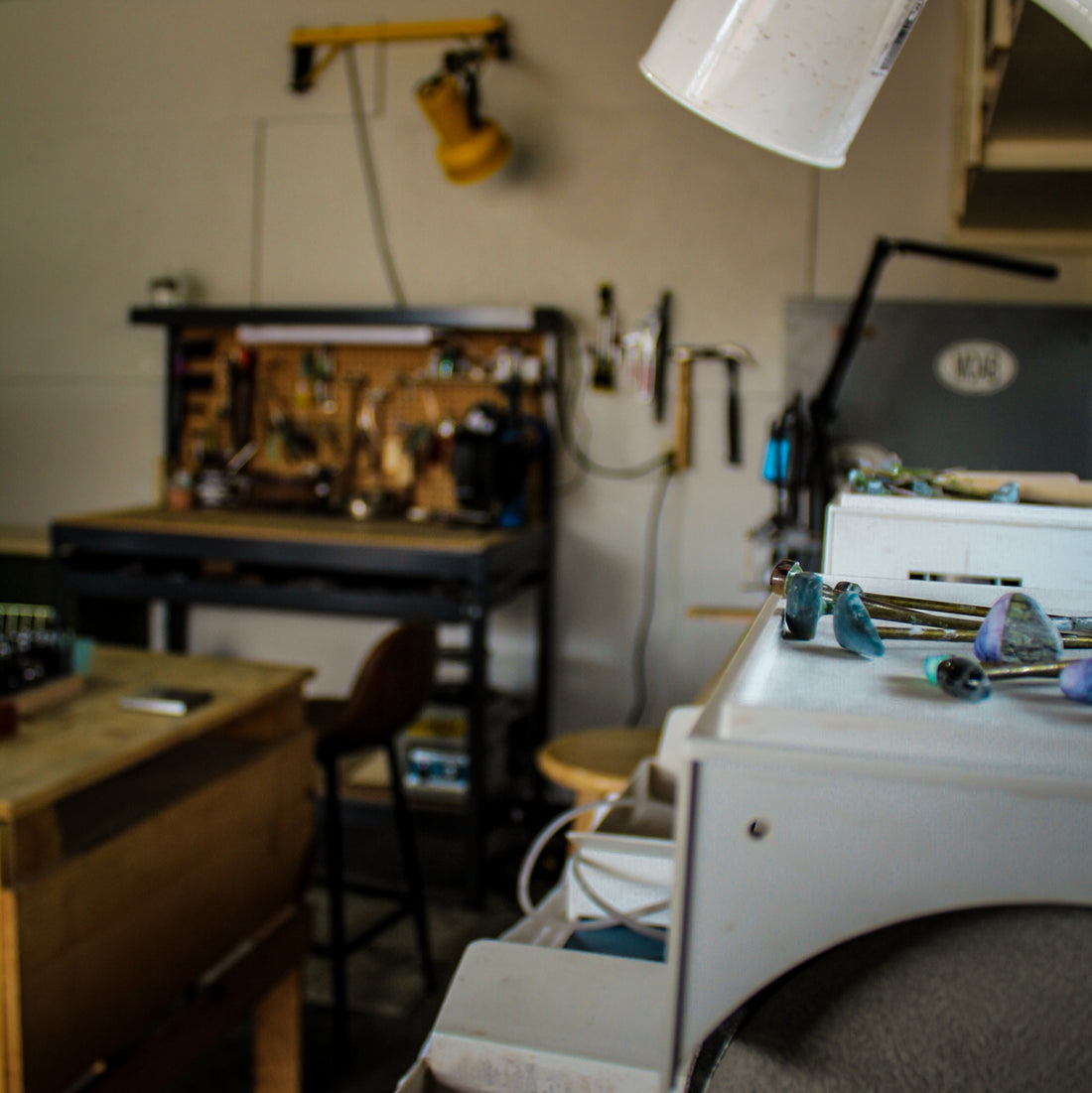To start working in lapidary, you'll need a set of essential tools to shape, cut, grind, and polish stones. Here's a list of the basic tools you'll need to start your rock cutting journey!
Safety Gear:
- Safety goggles to protect your eyes from flying debris. Dust mask to prevent inhalation of stone dust and particles. Closed-toe shoes to protect your feet from accidental injuries.
Lapidary Saw:
- A basic lapidary saw is essential for cutting rough stones into manageable pieces. A trim saw or a slab saw is commonly used for this purpose.
Grinders and Sanders:
- Grinder: A grinder is used to shape rough stone pieces into desired shapes and remove excess material. It typically has a rotating grinding wheel.
Polishing Equipment:
- Polishing wheels or laps: These are used to polish stones and achieve a smooth, shiny finish. Various grits of polishing compounds are used in conjunction with polishing wheels.
- Polishing compounds: Compounds such as diamond paste or oxide polishes are applied to polishing wheels to achieve different levels of polish.
Dop Sticks and Wax:
- Dop sticks are used to hold stones securely while shaping and polishing. They are typically made of wood or metal.
- Wax is applied to dop sticks to secure stones in place during the shaping and polishing process.
Calipers and Measuring Tools:
- Calipers are used to measure the dimensions of stones accurately. They help in achieving precise cuts and shapes.
Safety Equipment:
- First aid kit: In case of minor injuries, having a first aid kit handy is essential.
- Fire extinguisher: Lapidary work involves machinery that can pose fire hazards, so having a fire extinguisher nearby is important for safety.
Workbench or Lapidary Workstation:
- A sturdy workbench or workstation provides a stable surface for working with lapidary tools and equipment.
Water Supply:
- Many lapidary tools require a constant supply of water to lubricate and cool the cutting surfaces. Ensure you have access to a water source or a container for water supply.
Storage and Organizational Tools:
- Containers for storing rough and polished stones.
- Tool organizers for keeping lapidary tools and accessories neatly arranged.
Starting with these essential tools will allow you to begin your journey in lapidary work. As you progress and develop your skills, you may choose to invest in additional specialized tools and equipment to expand your capabilities.
Here is a free shopping list for materials and tools! (Including afliate links)
Tools:
- Trim Saw or Slab Saw
Grinders and Sanders:
- Cabbing Machine or Lap Grinder
- Flat Lap Machine
- Polishing Wheels (Various Grits)
- Polishing Pads
Dop Sticks:
- Wooden or Metal Dop Sticks (dowels or nails)
Calipers and Measuring Tools:
- Digital Calipers
- Ruler or Measuring Tape
Miscellaneous:
- Tweezers or Pick-Up Tool (For Handling Small Stones)
- Marking Pen or Pencil (For Marking Stones)
Materials:
Rough Stones
- Agate, Jasper, Quartz, Obsidian, Amethyst, Carnelian
- Aluminum Oxide
- Cerium Oxide
- Diamond Paste (Various Grits)
- Standard Dop Wax
Abrasive Grits:
- Silicon Carbide Grit (60/90, 120/220, 400/600, 800/1200)
- Aluminum Oxide Grit (600, 1200, 3000)
Water:
- Distilled Water (For Cooling and Lubrication)
Safety Equipment:
- Closed-Toe Shoes
- Ear Protection (Optional)
Books:
- Introduction to Lapidary by Pansy D. Kraus: This comprehensive guide covers the fundamentals of lapidary work, including cutting, grinding, shaping, and polishing techniques. It also provides insights into selecting and working with different types of stones.
- The Art of Gem Cutting: Including Cabochons, Faceting, Spheres, Tumbling, and Special Techniques* by H.C. Dake: This book offers detailed instructions and illustrations on various lapidary techniques, from basic cabochon cutting to advanced faceting and carving methods.




